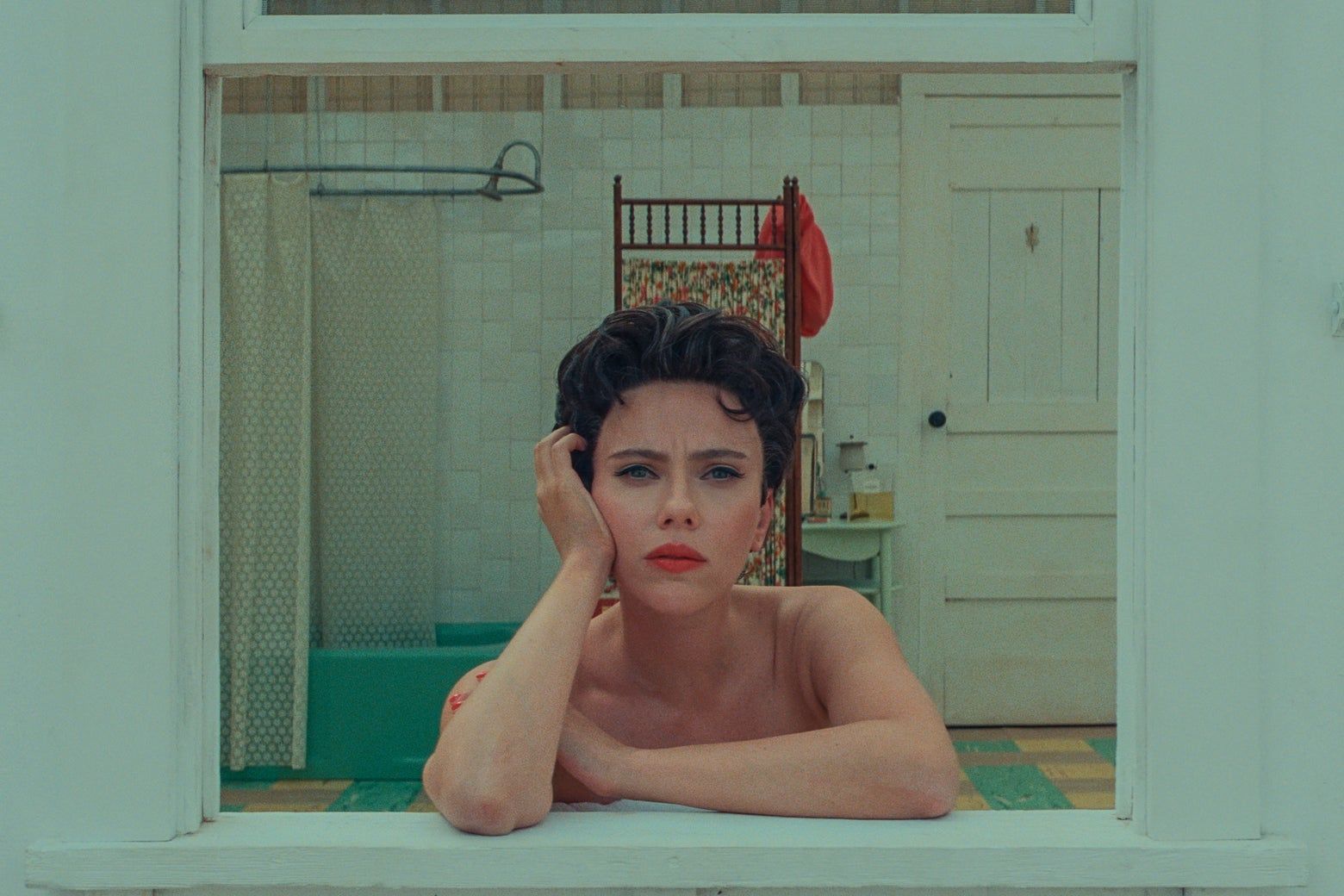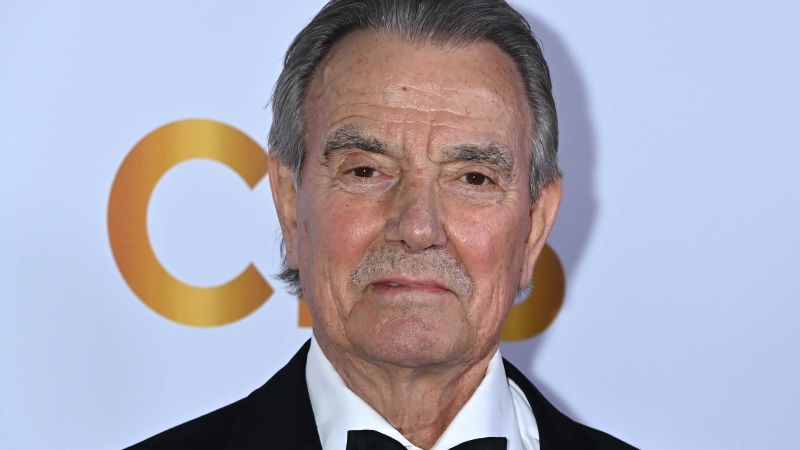Wes Anderson’s New Movie Explains Wes Anderson
Is there anything left to say about Wes Anderson? Scan the reviews of Asteroid City, his 11th movie, and you’d be forgiven for wondering if you’ve slipped into a time warp. Each time a new Anderson movie slips into the wild, devotees and detractors alike revive the same arguments, and in terms so interchangeable it can be hard to discern if you’re reading a rave or pan: One Wes-head’s meticulous is another Wes-hater’s fussy. The Guardian’s Peter Bradshaw writes that Asteroid City has “little or no emotional content,” and that its “savant blankness” is simply “the expression of style.” Can you guess, without clicking through, whether it got one star or four?
Advertisement
The “inherent exclusivity” of Anderson’s style, writes Time’s Stephanie Zacharek, “can make you feel like part of a secret club,” and his characters do seem fond of their fraternal affiliations, whether they belong to the Zissou Society, the Khaki Scouts, or the Society of the Crossed Keys—not to mention the dozen-plus extracurricular organizations headed by Rushmore’s Max Fischer. But where Wes Anderson is concerned, it feels like there are clubs on both sides, or more accurately factions, dug in and ready for battle.
Advertisement
Advertisement
Advertisement
The perennial argument about whether Anderson’s movies are splendid or suffocating bears the same relationship to his films as the generative A.I. parodies of Anderson’s instantly recognizable style that blanket social media like a center-framed plague, which is to say that they look spot-on at first, but the longer you look, the more not-quite-right they seem. If this discursive loop-the-loop bothers Anderson himself, he shows no signs of it. (A man who wears that much seersucker cannot be easily ruffled.) But Asteroid City is at particular pains to get its audience to notice what it’s doing, providing a skeleton key that unlocks not only this particular movie, but Anderson’s entire body of work.
Advertisement
It’s also the first Wes Anderson movie that made my head hurt. Asteroid City opens with the host of a black-and-white 1950s-style TV program, played by a stentorian Bryan Cranston, explaining what it is that we’re about to watch—or rather, what we aren’t. “Asteroid City does not exist,” he says. “It is an imaginary drama created expressly for the purposes of this broadcast. The characters are fictional, the text hypothetical, the events an apocryphal fabrication.” Are we entering Wes World, or the Twilight Zone?
Advertisement
What we are watching is a televised production of a play about the making of a play, the last of which is presented as a widescreen color film. (You see where the headache comes in.) The vast majority of Asteroid City takes place within the last of those frames, where a group of child science prodigies—members of the Junior Stargazers and Space Cadets—and their parents have converged on a tiny desert town to demonstrate their inventions for the U.S. military. Asteroid City, population 87, is a candy-colored oasis in the middle of a dusty nowhere, a tourist trap devoid of tourists. (Despite its massive impact crater, the extraterrestrial object that gives the town its name turns out to be roughly the size of a deflated soccer ball, not exactly something you build a road trip around.) Built in the Spanish desert by Anderson’s regular production designer Adam Stockhausen, it reads as two-dimensional although it exists in three—a reverse trompe l’oeil.
Advertisement
Advertisement
It’s a flamboyantly constructed world, even if, like the unfinished on-ramp to a nonexistent highway in the middle of town, that construction isn’t always complete. Every time there’s a risk of us settling into the main story, Anderson pulls back a level to show us the actors in it—or rather, the actors playing those actors—rehearsing their lines, questioning their characters’ motivations, even auditioning for their parts. It’s a lot to keep track of, and not even the actors always seem to know where they are. Anderson’s characters usually share a talent for deadpan eloquence, but in Asteroid City, their dialogue is marked by persistent repetitions, verbal stutter-steps like “First I’ll read my speech first” and “Sometimes I think sometimes.” It’s as if they’re playing for time until they can remember their next line. At one point, the black-and-white host accidentally stumbles into the full-color main story, then abashedly ducks out of the frame.
Advertisement
Advertisement
Advertisement
Anderson has used this frame-within-a-frame-within-a-frame device before, in The Grand Budapest Hotel, which likewise deployed changes in aspect ratio and color palette to triple-underline its own artifice. But the movie Asteroid City most closely resembles is 2004’s The Life Aquatic With Steve Zissou, whose oceanographer hero channels his grief over the death of a lifelong friend into a documentary about the hunt for the shark that killed him. Although he’s nominally a maker of nonfiction, Bill Murray’s melancholy explorer has no qualms about fudging the truth in his own movies. When an admirer praises a portrait of him as “very lifelike,” Steve responds, “I’m not crazy about it.”
Sorrow is just something his characters learn to live with, like the piece of battlefield shrapnel permanently embedded in Augie Steenbeck’s skull.
The Life Aquatic’s quarrel with the truth-signifying style of cinéma vérité is largely subtextual: Anderson shoots some of his most absurd set pieces with a handheld camera, and at one point drops the background hubbub out of the middle of a scene, as if realism were just an affectation to be dispensed with when it gets in the way. Asteroid City literally foregrounds the debate, setting the movie’s black-and-white reality, the one in which the actors are preparing to stage a play called Asteroid City, amid the method-acting revolution of the 1950s. Conrad Earp (Edward Norton) plays a soft-spoken playwright à la Tennessee Williams, while Jason Schwartzman plays the actor who, like Marlon Brando, travels to the writer’s home to audition. (The movie also insinuates he might have slept his way into the part.) Schwartzman also appears several times with a turtleneck sweater pulled up over his chin, emulating an iconic image of James Dean, and the play’s director, played by Adrien Brody, is an amalgam of Brando and A Streetcar Named Desire director Elia Kazan.
Advertisement
Advertisement
Advertisement
Anderson’s not aiming for pointed or even coherent critique of the method, so much as to contextualize it as one style among many—perhaps a road to the truth, but not the only one. Asteroid City’s central character, the one Schwartzman’s actor is so desperate to play, is Augie Steenbeck, a war photographer and father of four and recent widow. Augie is so inured to trauma, whether by profession, circumstance, or just temperament, that he can seem to be indifferent to it. It’s been three weeks since his wife died, but he hasn’t even broken the news to their children yet, and when he does, the best he can manage is saying that she “succumbed to her illnesses.” Small wonder that when mushroom clouds go up in the distance from the military’s atom-bomb tests, his first impulse isn’t to run for cover but to reach for his camera.
Advertisement
Augie, who takes his surname from a machine used to edit celluloid film, makes an unexpected connection with Midge Campbell (Scarlett Johansson), a famous movie actress who, like Augie, has been drawn to a remote desert motel by her science-nut child. Like Marilyn Monroe, who studied method acting with Lee Strasberg, Midge is, by her own lights, a “gifted comedienne,” but she keeps getting cast as “tragic alcoholics,” and she alludes to a long history with abusive men. But like Augie, she keeps her pain to herself. They are, she tells him, “two catastrophically wounded people who don’t express the depths of our pain because—we don’t want to.”
Advertisement
Advertisement
Grief and loss haunt Anderson’s filmography as far back as Rushmore: Max Fischer’s mother died when he was 7 (Anderson’s parents divorced when he was 8); The Darjeeling Limited’s brothers try to mend their family after the death of their father; the siblings of The Royal Tenenbaums seek to reconcile with their estranged father and end the movie at his funeral; The Grand Budapest Hotel’s narrator mourns the death of his childhood mentor and, eventually, his own wife and son. (Asteroid City is also set in September 1955, the month of James Dean’s fatal accident.) But his characters rarely wear that pain on their finely tailored sleeves, sometimes because they’re incapable of expressing it, but often because—they just don’t want to. Anderson’s movies aren’t emotionless—if anything, they verge on sentimental—but they don’t traffic in cathartic weeping or treacly catharsis. Sorrow is just something his characters learn to live with, like the piece of battlefield shrapnel permanently embedded in Augie Steenbeck’s skull.
Advertisement
Advertisement
This sentiment-once-removed can be tricky for audiences to grasp—although it helps when an actor as fluent in tragic repression as The Grand Budapest Hotel’s Ralph Fiennes or The Royal Tenenbaums’ Gene Hackman is at the movie’s center—and it’s no cinch for the actor playing Asteroid City’s lead, either. “Why does Augie burn his hand on the Quickie Griddle?” he asks Norton’s playwright, a reference to a scene we won’t see him act out for the better part of an hour, and though he comes up with his own tentative answer, the movie deliberately leaves that question unanswered. There’s something a little perverse about how Anderson writes Augie a heart-rending speech about living with grief that ought to serve as the movie’s emotional climax, and then presents it only as the monologue the actor playing Augie uses to audition for the role. Augie does eventually burn his hand on the Quickie Griddle, but neither he nor we really know why.
Advertisement
Related from Slate Dana Stevens With Asteroid City, Wes Anderson Goes Where He Never Has Before Read More
Fiction often seeks to explain the human condition, to offer answers to questions that elude us in our own lives, but Asteroid City refuses that mandate. Toward the end of the movie, we see the actors in the play attending a lecture by the teacher Saltzburg Keitel (Willem Dafoe), who instructs them to approach their characters from “the outside in”—the practical opposite of the method approach. Dafoe has worked with Anderson before, but he’s particularly apt for this part as a longtime member of the Wooster Group, the experimental theater troupe that rejected method acting in favor of having the actors “simply do things on stage.” Anderson doesn’t read as an artistic tyrant—as the cast of Asteroid City amply shows, name actors line up for even the smallest parts in his movies—but you sense he might at least be simpatico with the playwright Noel Coward, who suggested that any actor inquiring about their motivation should turn to their paycheck.
Advertisement
Advertisement
The characters in Asteroid City’s “imaginary drama” live in the conditional tense, in a town named for a chunk of celestial debris from a “hypothetical planet” that has since been downgraded to a “rogue pygmy cometette.” (Even the asteroid is technically a meteorite.) But that doesn’t mean that what they feel isn’t real. Johansson’s actress shows up in town sporting a black eye under her sunglasses, and even though it turns out to be just greasepaint—preparation to play yet another abused woman—it reveals something about her. The fake isn’t a diversion from the truth; it’s another pathway to it.
Waiting for Lefty, the breakthrough play by the method-affiliated playwright Clifford Odets, famously ended by exhorting its audience to join its characters in a pro-union chant. But instead of a call to action, Asteroid City climaxes with a call for reflection. After being coaxed to liberate themselves from the shackles of realism, the actors in Saltzburg Keitel’s class begin to chant “You can’t wake up if you don’t fall asleep.” Wes Anderson’s movies invite us into their dreams. The waking up, he leaves to us.
Source: Slate


